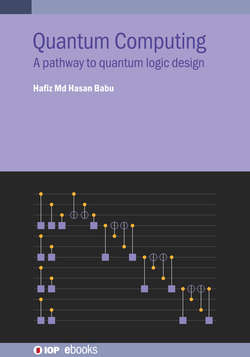Читать книгу Quantum Computing - Hafiz Md. Hasan Babu - Страница 13
На сайте Литреса книга снята с продажи.
1.3 The relationship between reversible and quantum logic
ОглавлениеReversible logic circuits have one-to-one mapping between inputs and outputs. In other words, if the number of outputs in a logic circuit is equal to the number of inputs, and any input pattern may map to a unique output pattern, it is called a reversible logic circuit.
All the reversible circuits can be represented by quantum logic gates. Quantum circuits maintain the rules of reversible logic. Quantum logic circuits must have a one-to-one relationship between the input and output vectors like reversible logic. Quantum logic gates have unique unitary matrices which are also present in reversible logic. However, there are also differences between these two types of logic. Unlike in quantum logic, the superposition of bits and multiple values is not possible in reversible logic. Thus both similarities and differences exist between reversible and quantum logic.
Reversible circuits have broad applications in nanocomputing. Nanoelectronics engineering that would enable device scaling down to molecular levels will almost surely imply a cellular architecture with near-neighbor connectivity. The scheme which has been developed to physically realize such a concept is called the quantum-dot cellular automata (QCA). QCA have drawn a lot of attention for their very small feature size and ultra-low power consumption, which make them one candidate for substituting CMOS technology.
